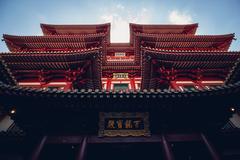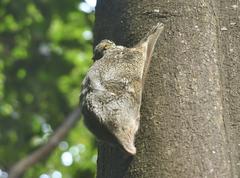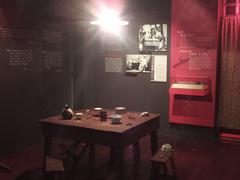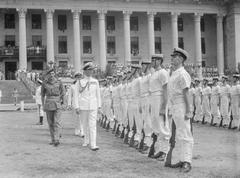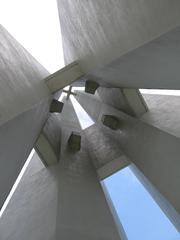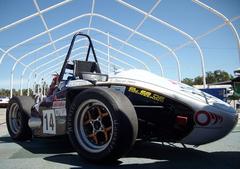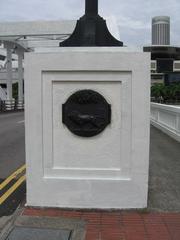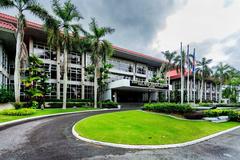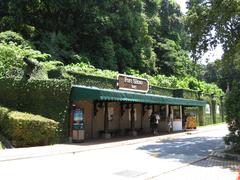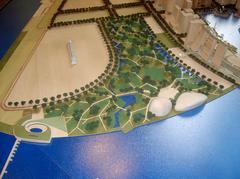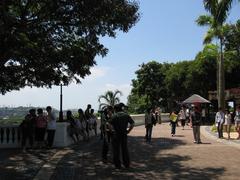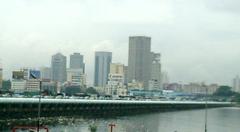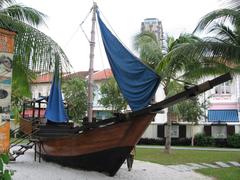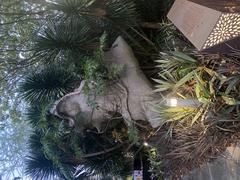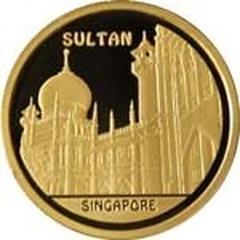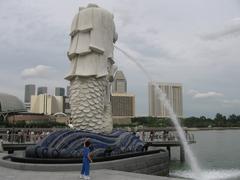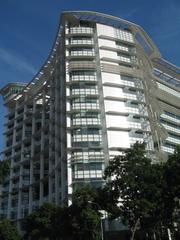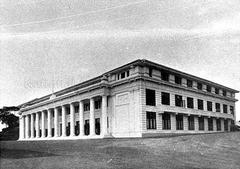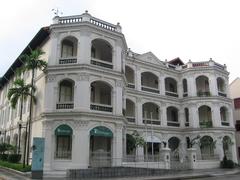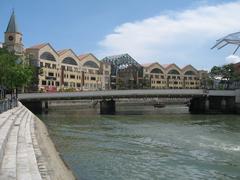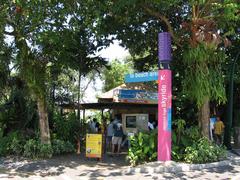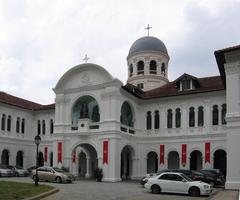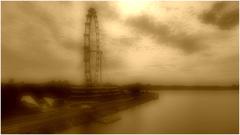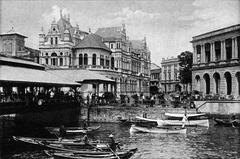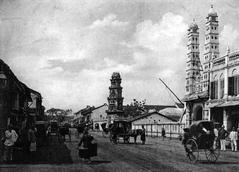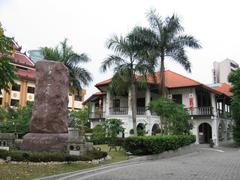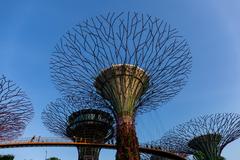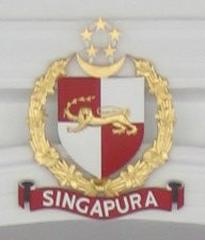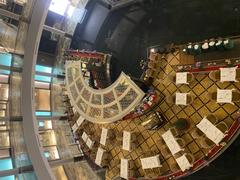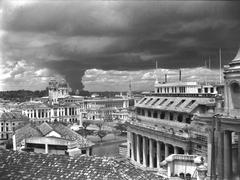Baba House Singapore: Visiting Hours, Tickets, and Comprehensive Visitor Guide
Date: 04/07/2025
Introduction
Baba House Singapore stands as an exceptional heritage museum, opening a window into the intricate and vibrant world of the Peranakan (Straits Chinese) community. Located at 157 Neil Road, in the heart of Singapore’s Chinatown, Baba House is a meticulously restored late 19th-century terrace house. It not only showcases architectural excellence but also serves as a living archive of domestic life, social customs, and artistic traditions unique to Peranakan culture. With a blend of Chinese, Malay, and European influences, Baba House is a vital destination for anyone seeking to understand Singapore’s multicultural roots and the evolution of its urban identity (NUS Baba House, lionheartlanders.com, Driving Directions Singapore).
Origins and Historical Context
The Peranakan community—descendants of Chinese immigrants and local Malay women—flourished in Singapore from the 15th century onwards, creating a distinctive identity. Baba House, originally belonging to the Wee family, exemplifies the prosperity and cosmopolitan lifestyle of the Peranakan elite in the early 20th century. The property was later entrusted to the National University of Singapore (NUS) Museum, ensuring its preservation as a heritage site (roots.gov.sg, myguidesingapore.com).
Architectural Features and Material Culture
Facade and Exterior
Baba House’s iconic indigo blue façade immediately catches the eye. The use of natural indigo dye was both a status symbol and a talisman believed to ward off evil spirits. The exterior integrates Chinese, Malay, and European motifs—such as plaster reliefs, porcelain tiles, and timber shutters—reflecting the cosmopolitan outlook of its original owners (SG101).
Floor Plan and Interior Layout
The house follows the traditional shophouse design with a long, narrow structure and a central air well. Key spaces include:
- Five-foot Way: Sheltered walkway at the entrance.
- Front Hall: Reception and business area.
- Ancestral Hall: Central altar and family portraits.
- Rear Hall & Kitchen: Segregated for privacy and practicality.
The three-storey layout features two floors restored to 1920s domestic life and a third floor dedicated to rotating exhibitions (Wikipedia).
Decorative Arts and Symbolism
Inside, the house is adorned with carved wooden screens, mother-of-pearl inlaid furniture, and vibrant Art Nouveau tiles. Symbolic motifs like the phoenix (longevity) and peony (prosperity and marital bliss) are found throughout. The traditional pintu pagar (swing doors), decorated with intricate inlays, serve as both ceremonial and functional design elements (Driving Directions Singapore).
Collections and Notable Artifacts
Baba House conserves over 2,000 artifacts, most arranged in situ to recreate a living environment:
- Furniture: Blackwood, mother-of-pearl inlaid chairs, tables, cabinets.
- Textiles: Hand-embroidered kebayas, batik sarongs, beaded slippers (kasut manek).
- Ceramics and Silverware: Chinese export ware, locally commissioned pieces, and Peranakan jewelry.
- Household Objects: Tiffin carriers, betel nut sets, spittoons.
The third floor features contemporary exhibitions that explore evolving Peranakan identity (Singapore Travel Hub).
Visiting Hours and Tickets
- Opening Hours: By appointment only, Tuesday to Sunday, 10:00 AM – 6:00 PM. Closed on Mondays and public holidays.
- Admission: Free for Singapore citizens, permanent residents, NUS staff, students, alumni, ICOM and Museum Roundtable members. Standard fee: SGD 10 for other visitors (Holidify).
- Booking: Mandatory online booking at least one week in advance via the official Baba House website.
How to Get There
- MRT: Outram Park (10-minute walk); Chinatown MRT is also nearby.
- Bus: Several routes serve Neil Road and surrounding Chinatown area.
- Car/Taxi: Limited street parking; public transport recommended.
- Cycling/Walking: The area is pedestrian and bike-friendly (Singapore Trip Guide).
Accessibility and Visitor Facilities
As a conserved heritage building, Baba House has narrow staircases and no elevators, limiting full wheelchair accessibility. Visitors with mobility challenges should contact the museum prior to their visit for possible arrangements. Restrooms are available; there is no café on site, but Chinatown offers diverse dining nearby.
Onsite Experience
Guided Tours and Interpretation
- Guided Tours: Led by expert docents, providing deep insights into Peranakan customs, architecture, and daily life. Group size is capped at 14–15 for a personalized experience.
- Self-Guided Visits: Audio guides and printed materials are available.
- Special Programs: Workshops, thematic activities, and contemporary art exhibitions are held throughout the year (Little Day Out).
Visitor Etiquette
- Dress Code: Modest attire recommended due to the historic setting.
- Photography: Not allowed inside to protect artifacts and maintain ambiance.
- Language: Tours are generally in English; inquire ahead for other languages.
Practical Tips
- Book Early: Slots fill quickly, especially for guided tours.
- Time Required: Allocate 1–2 hours for a full experience.
- Nearby Attractions: Combine your visit with Chinatown Heritage Centre, Sri Mariamman Temple, and Maxwell Food Centre (Chinatown Heritage Centre, Sri Mariamman Temple).
Frequently Asked Questions
How do I book a visit?
Book online via the official Baba House website at least one week in advance.
What are the visiting hours?
Tuesday to Sunday, 10:00 AM to 6:00 PM. Closed Mondays and public holidays.
Can I take photos inside?
No, photography and videography are not permitted inside the house.
Is Baba House wheelchair accessible?
Accessibility is limited. Contact the museum for assistance.
Are guided tours available?
Yes, small-group guided tours are available and highly recommended.
Conclusion
Baba House is a rare gem among Singapore historical sites, offering a fully immersive journey into the heart of Peranakan heritage. From its striking architectural features and symbolic décor to its authentic domestic settings and rich collections, every aspect invites reflection on Singapore’s multicultural evolution. Advance booking is essential, and guided tours enrich the understanding of this unique culture. Combine your visit with other Chinatown attractions for a truly rewarding exploration of Singapore’s layered history.
Plan Your Visit
- Book your visit: Official Baba House Website
- Explore more: Interactive Map and Virtual Tour
- Discover nearby: Chinatown Heritage Centre, Sri Mariamman Temple
- Learn more: Peranakan Heritage page
Visual Media Suggestions
- “Baba House facade showcasing Peranakan architecture”
- “Intricately carved mother-of-pearl furniture at Baba House”
- “Historical Peranakan artifacts displayed in Baba House interiors”
- Preview the house with the official virtual tour
References
- NUS Baba House
- lionheartlanders.com
- Driving Directions Singapore
- SG101
- Singapore Trip Guide
- myguidesingapore.com
- Wikipedia
- Little Day Out
- Singapore Travel Hub
- Holidify
- TripVenture



